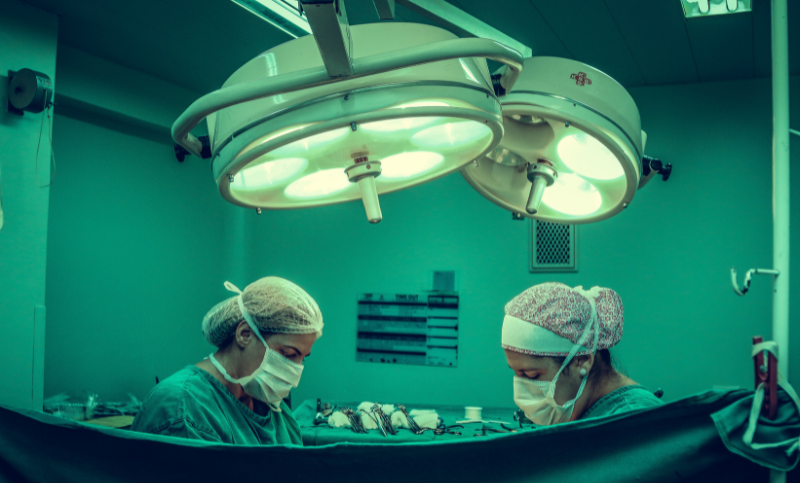What is Robotic Adrenalectomy and how does it work?
What is Robotic Adrenalectomy and how does it work?

Robotic adrenalectomy is a surgical procedure to remove either one or both of the adrenal glands using small tools that are attached to a robotic system.
The adrenal glands are small organs that secrete hormones – such as epinephrine, norepinephrine, androgens, estrogens, aldosterone, and cortisol – which help regulate a range of bodily functions like your immune system, blood sugar levels, blood pressure control, and metabolism. They are located just above the kidneys, triangular in shape and are roughly the size of an adult thumb.
Adrenalectomies are commonly used to treat benign or cancerous tumours in the adrenal gland. Other reasons may include excessive secretion of a hormone that can cause harmful side effects. Adrenal tumours are responsible for causing severe problems such as hypertension, palpitations, headaches and weight gain, so they must be removed immediately.

What Is A Robotic Adrenalectomy?
Robotic adrenalectomy is a surgical method for removal of the adrenal glands using small tools that are attached to a robotic system. Rather than the surgeon performing the procedure with their own hands, they control robotic arms with a computer. Robotic adrenalectomies are far less invasive than traditional surgery and have many advantages and health benefits. Currently, robotic adrenalectomy is the most popular type of surgical procedure for dealing with tumours in the adrenal gland.
How Does It Work?
Robotic adrenalectomy is performed by a surgeon sitting at a computer station, who directs the movements of the robotic arms via a computer interface.
The robot’s camera and instrument-bearing arms are inserted through several small incisions in the abdomen. The adrenal gland is detached internally, placed in a bag, then removed through one of the incisions. The blood vessels to the adrenal gland are tied off or clipped. If the surgery is to treat cancer, the surrounding tissue may also be removed – this may include the removal of nearby lymph nodes.
The adrenal glands are close to other vital organs, including the vena cava, pancreas, liver and spleen, so special care must be taken during surgery so as not to disrupt any of these organs. This is where the added precision of robotic arms becomes invaluable.
Advantages of Robotic Adrenalectomy
Robotic adrenalectomy has several advantages over traditional surgery, even laparoscopic surgery. Firstly, the technology used in robotic surgery enhances precision, control and flexibility of the surgeon’s movements. The robotic arms have seven degrees of freedom, which means they can move in more ways than the human wrist.
Robotic surgery also provides a high definition and three-dimensional vision, allowing the operating surgeon to distinguish vital organs close to the adrenal glands and other surrounding tissue, increasing the chance of preserving them.
If you undergo robotic surgery, your recovery time will significantly decrease as robotic surgery is far less invasive and requires less incisions. Because of this, the procedure will leave you with less scarring and a minimal amount of pain.
There is less blood loss involved with robotic surgery, with a lower risk of infection from the procedure.
Robotic adrenalectomy can also provide better visualisation which allows greater control of the surgeon’s movements and ability to perform more delicate parts of the procedure. This lowers the chance of damaging arteries supplying the adrenal gland and makes the removal of the gland much easier.

Risks and Side Effects
As with any surgery, there are risks associated with robotic surgery. However, the technique is very safe compared to open surgery and is now considered the gold standard that all techniques are measured against.
Side effects of removing the adrenal gland(s) include major hormone imbalances caused by the surgery. This can, in turn, cause affect bodily functions like healing, metabolic function, blood pressure levels and blood sugar levels.
Recovery
Recovery time after robotic adrenalectomy is much shorter than open surgery or even laparoscopic surgery.
Following the procedure, patients are taken to recovery and monitored closely. A brief 1-3 day stay in hospital is usually required.
Heavy lifting and other strenuous activities are discouraged for up to 6 weeks, and driving is discouraged for up to 2 weeks. However, light activities and return to work are recommended whenever the patient feels up to it, usually 1-2 weeks after the surgery.
Robotic Adrenalectomy with Urology Specialist
During his two year fellowship, Dr Arianayagam spent a significant amount of time under the tutelage of Dr Murugesan Manoharan, Professor of Urology and Program Director at the Department of Urology of the University of Miami Miller School of Medicine.
With Dr Manoharan as a mentor and teacher, Dr Arianayagam gained a wealth of experience in robotic surgery. Robotic radical prostatectomy soon became his preferred surgical method of treatment for prostate cancer. Dr Arianayagam performs robotic radical prostatectomy at both Macquarie University Hospital and Nepean Public Hospital. He is now also a proctor for Device Technologies, who supply the Da Vinci Robotic System in Australia. Being a proctor means Dr Arianayagam is qualified to teach other surgeons to use this technique.
If you have any further questions or would like to book an appointment, please feel free to contact or call Dr Arianayagam’s office on 1300 307 990, and his staff will be happy to assist.
Find out more about other robotic surgeries Dr Arianayagam can provide:
Robotic cystectomy and how it works

Everything You Need to Know About Sperm Health
It is not uncommon for men to have troubles with their sperm production, or to develop a sperm disorder. But…

The Benefits of Drinking Water for Urological Health: Do You Really Need 8 Glasses a Day?
We’ve all heard the advice: “Drink eight glasses of water a day” But is this rule as important as it…






